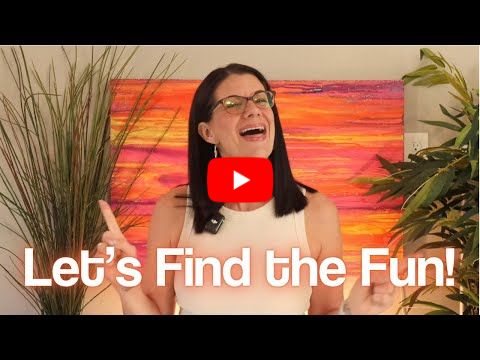Procrastination Getting In Your Way? Try This!
Time to Read: 4 mins
So let’s talk about that task.
You know… the one you keep pushing to tomorrow, and then the next day, and then the next?
Yep, I’ve got one of those too.
And if we’re being honest… most of the time it’s not the task itself that’s so unbearable.
It’s what our brain starts doing before we get to the task.
The dread. The negotiation. The avoidance that tries to disguise itself as productivity.
And I don't know about you, but I can get pretty creative with my avoidance techniques.
→ Let me just check my email first.
→ I’ll start right after I refill my water.
→ Actually, I should probably reorganize my desktop real quick.
And on and on it goes.
We tell ourselves we’ll feel more ready later — after we’ve cleared some space, after we’ve warmed up, after we’ve done literally anything else.
But motivation rarely shows up after the delay. More often, it shows up after we start.
Earlier this week, I blocked out time to work on a speech and slide deck for an upcoming keynote I’m giving.
The topic? Self-Leadership, of course! My favorite thing to teach!
The audience? My people! Business owners and leadership teams — all midlife professionals.
The delivery? Already outlined in my head.
And yet… I couldn’t make myself open Canva and start working on the slides.
It wasn’t full-blown procrastination — it was that sneakier form of resistance.
I kept bouncing between tasks that felt productive but weren’t actually moving me forward.
I reorganized my desktop, skimmed a few articles, checked my calendar for no seemingly good reason. I even re-wrote a post-it note that was perfectly fine.
But I couldn’t start the slides.
And here’s the important part…
When I realized what was happening, I didn’t try to push through it. Instead, I paused.
And I asked myself something that’s become one of my go-to questions:
What exactly is making this feel heavy right now?
Because when I slowed down long enough to actually name what I was resisting, the answer surprised me.
I wasn’t overwhelmed by the task. I just lacked clarity on where to start.
Which, if I’m being honest, is a personal kryptonite that sabotages me far too often.
So instead of trying to muster more motivation or force myself into action, I gave myself what I was missing: A small entry point into clarity.
I closed the slides.
Grabbed a pen and paper.
And jotted down the three big ideas I wanted the audience to walk away with. No formatting. No transitions. No design.
Just words.
And once I had that? I was off and running.
But... Why?
Here’s the thing most people misunderstand about motivation:
It doesn’t come from pushing harder.
It comes from creating the conditions where your brain feels safe, clear, and connected.
When we resist a task, it’s rarely because we’re lazy. It's usually because we’re experiencing friction.
And this can show up in different ways...
→ Uncertainty about how to start
→ Boredom or disconnection from the purpose
→ Overwhelm from the scope
→ Perfectionism about getting it “right”
But when you can identify which part is making it feel heavy…
You empower yourself to shift your experience with it.
And that’s the heart of self-leadership!
Not just getting things done, but learning to lead yourself through resistance with curiosity and compassion.
💡 Practionable Takeaway
The next time you feel yourself putting off a task, try experimenting with The Pre-Start Pause.
Three simple steps that take less than 2 minutes, but can completely change your energy.
1️⃣ Pause. Literally stop for 30 seconds. No phone, no distractions. Just stillness in the moment.
2️⃣ Ask, "What exactly is making this feel burdensome?” Get specific. Is it the starting point? The time commitment? The fear of it not being good enough? Explore this for yourself.
3️⃣ Then ask, “What’s one thing that would make this feel just a little more doable right now?” This might be something small, like outlining your first three steps. Or putting on a particular playlist. Or deciding you’re going to engage in the task for just 5 minutes and then reevaluate.
You don’t need to solve the whole task — you just need to change how you meet it.
This kind of pause turns avoidance into awareness.
And awareness is the first step toward action.
🎥 Want to Go Deeper?
If this exercise resonated with you, check out my newest video, which takes it a step further and builds on this idea in a really powerful way.
It explores how natural reward strategies (a research-backed self-leadership strategy) can help you shift your experience with mundane, annoying, or just plain boring tasks… so they feel more doable, and even enjoyable.
|
Keep showing up and shining bright!
Laura








Responses